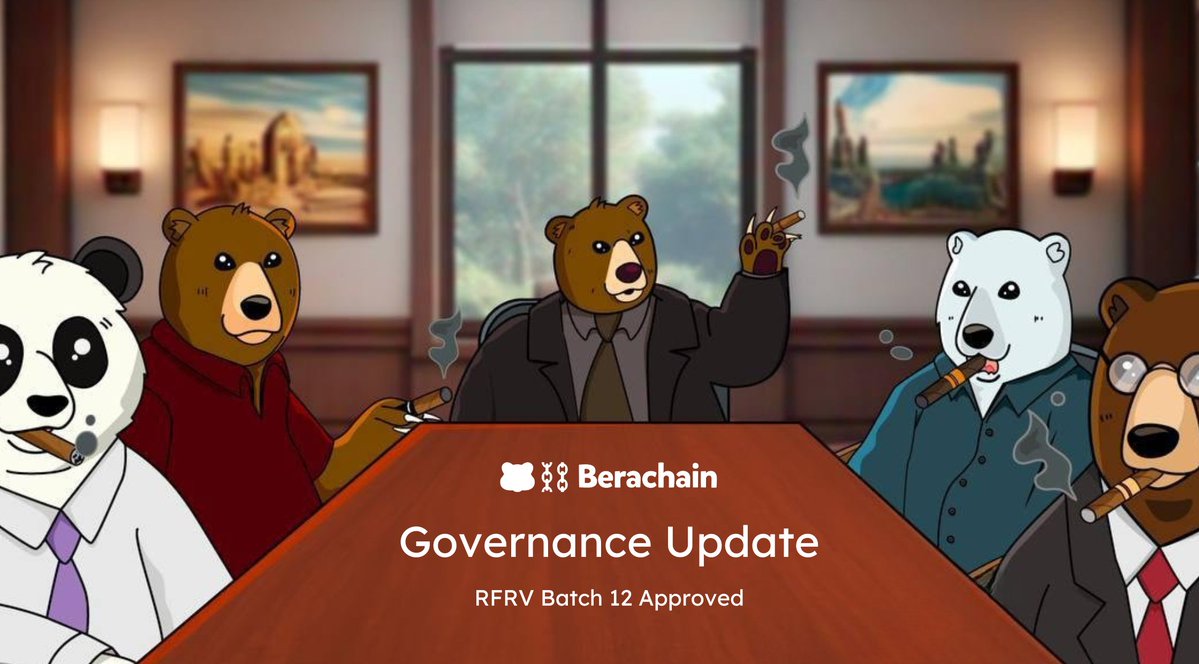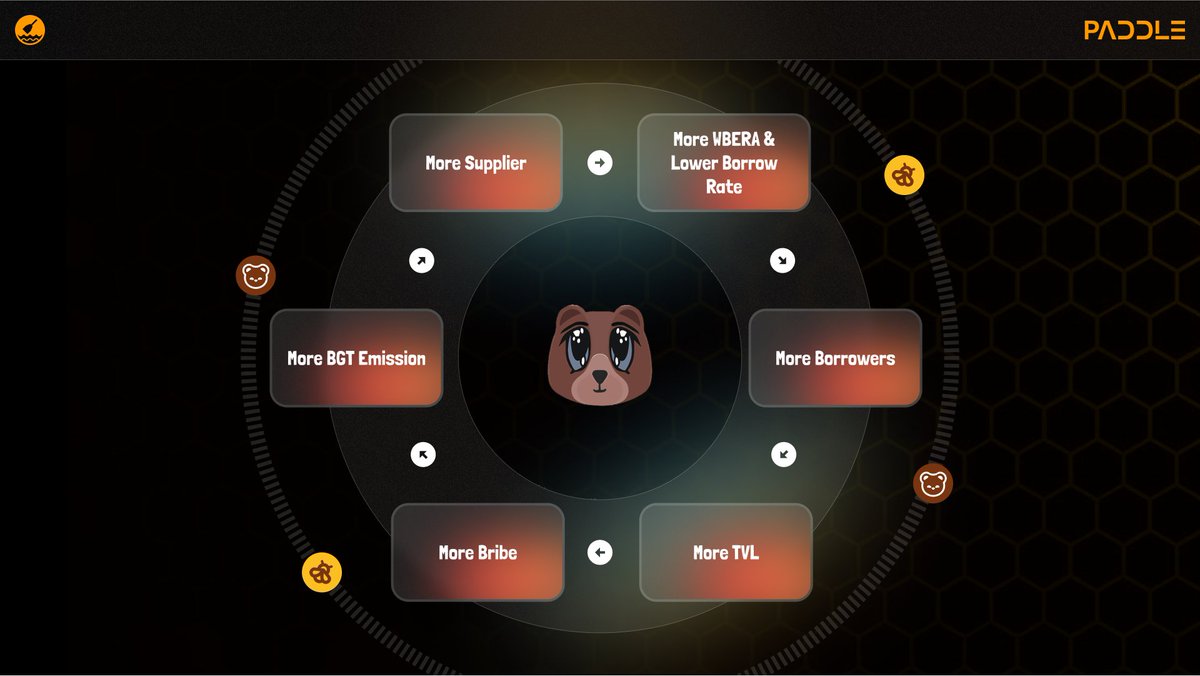
NFT
APENFT价格
$0.00000039830
+$0.00000
(-3.26%)
过去 24 小时的价格变化

您认为 NFT 今天会涨还是会跌?
您可以点赞或点踩来表达对该币种今日涨跌的预测
投票并查看结果
免责声明
本页面的社交内容 (包括由 LunarCrush 提供支持的推文和社交统计数据) 均来自第三方,并按“原样”提供,仅供参考。本文内容不代表对任何数字货币或投资的认可或推荐,也未获得欧易授权或撰写,也不代表我们的观点。我们不保证所显示的用户生成内容的准确性或可靠性。本文不应被解释为财务或投资建议。在做出投资决策之前,评估您的投资经验、财务状况、投资目标和风险承受能力并咨询独立财务顾问至关重要。过去的表现并不代表未来的结果。您的投资价值可能会波动,您可能无法收回您投资的金额。您对自己的投资选择自行承担全部责任,我们对因使用本信息而造成的任何损失或损害不承担任何责任。提供外部网站链接是为了用户方便,并不意味着对其内容的认可或控制。
请参阅我们的 使用条款 和 风险警告,了解更多详情。通过使用第三方网站(“第三方网站”),您同意对第三方网站的任何使用均受第三方网站条款的约束和管辖。除非书面明确说明,否则欧易及其关联方(“OKX”)与第三方网站的所有者或运营商没有任何关联。您同意欧易对您使用第三方网站而产生的任何损失、损害和任何其他后果不承担任何责任。请注意,使用第三方网站可能会导致您的资产损失或贬值。本产品可能无法在所有司法管辖区提供或适用。
请参阅我们的 使用条款 和 风险警告,了解更多详情。通过使用第三方网站(“第三方网站”),您同意对第三方网站的任何使用均受第三方网站条款的约束和管辖。除非书面明确说明,否则欧易及其关联方(“OKX”)与第三方网站的所有者或运营商没有任何关联。您同意欧易对您使用第三方网站而产生的任何损失、损害和任何其他后果不承担任何责任。请注意,使用第三方网站可能会导致您的资产损失或贬值。本产品可能无法在所有司法管辖区提供或适用。
APENFT 市场信息
市值
市值是通过流通总应量与最新价格相乘进行计算。市值 = 当前流通量 × 最新价
流通总量
目前该代币在市场流通的数量
市值排行
该资产的市值排名
历史最高价
该代币在交易历史中的最高价格
历史最低价
该代币在交易历史中的最低价格
市值
$3.95亿
流通总量
990,105,682,877,398 NFT
占
999,990,000,000,000 NFT
的 99.01%市值排行
--
审计方

最后审计日期:2021年12月29日 (UTC+8)
24 小时最高
$0.00000041240
24 小时最低
$0.00000039350
历史最高价
$0.0000063500
-93.73% (-$0.00001)
最后更新日期:2021年11月15日 (UTC+8)
历史最低价
$0.00000022410
+77.73% (+$0.00000017420)
最后更新日期:2023年6月10日 (UTC+8)
APENFT 动态资讯
以下内容源自 。

Destiny
Camp Network 与 TrailHeads 项目深度解析:在 AI 时代重构所有权的“起源叙事”@campnetworkxyz
Camp Network 的底层逻辑是当“基建思维”颠覆传统商业范式,当多数行业追逐流量热点时,Camp Network 正以“铁轨建造者”的角色锚定长期价值,这里的“基础设施”并非物理形态,而是指向区块链与 AI 融合的技术底座
技术基建:构建支持去中心化所有权的协议框架,涉及智能合约、分布式存储或跨链交互机制
IP 逻辑基建:打破传统 IP 版权的垄断模式,通过 NFT 技术将内容权益碎片化、可确权化,例如将品牌 IP 拆解为可收藏、可交易的数字资产
应用基建:开发面向普通用户的工具或平台,让 AI 驱动的所有权管理,如自动版权分润、数字资产跨场景流通成为可能
把这类比理解:若传统商业是“搭建临时摊位卖货”,Camp 则是在铺设“数字经济的高速公路”,而 TrailHeads 正是首批获得“高速公路通行证”的参与者
TrailHeads NFT仅 1000 件的发行量,本质是“去中心化社区的创始成员 NFT”,持有者自动获得新项目功能的优先测试权,如 AI 生成 IP 的定制工具,核心决策的投票权,后续NFT系列的白名单资格。在区块链世界,“早期参与者”的身份可通过链上数据永久存证。TrailHeads 的隐喻是“拓荒者”,即当 Camp 生态成长为行业标杆时,其持有者将成为类似“比特币早期矿工”的历史符号,这种“时间戳价值”无法用短期价格衡量
TrailHeads 代表的“基建型 NFT”与传统 NFT 项目有本质区别,传统 NFT 项目是短期炒作、艺术收藏或社交身份,是基于设计或 IP 热度的市场供需,单一 IP 的商业化变现,往往依赖于流量炒作,波动性高,而TrailHeads 代表的“基建型 NFT”基于“基础设施参与资格”的限量性,构建跨领域的所有权协议标准,生态共建权、技术红利共享权,这种是依赖技术落地,适合长期价值投资者
Camp 的探索指向一个趋势,当 AI 具备自主生成内容的能力时,所有权确权将成为核心痛点。TrailHeads 可能是AI 创作-区块链确权-用户共治闭环的尝试,即持有 NFT 不仅是拥有数字资产,更是成为“AI 时代产权协议”的共建者
立即加入 TrailHeads:成为 AI 时代所有权革命的“第一批铁轨铺设者”, 因为真正的价值,永远藏在喧嚣之前的基建里@CampTrailHeads @campnetworkxyz

1.33万
82
APENFT 价格表现 (美元)
APENFT 当前价格为 $0.00000039830。APENFT 的价格在过去 24 小时内下跌了 -3.25%。目前,APENFT 市值排名为第 0 名,实时市值为 $3.95亿,流通供应量为 990,105,682,877,398 NFT,最大供应量为 999,990,000,000,000 NFT。我们会实时更新 APENFT/USD 的价格。
今日
+$0.00000
-3.26%
7 天
+$0.00000
-3.91%
30 天
+$0.00000
-8.67%
3 个月
+$0.00000
-8.63%
关于 APENFT (NFT)
此评级是欧易从不同来源收集的汇总评级,仅供一般参考。欧易不保证评级的质量或准确性。欧易无意提供 (i) 投资建议或推荐;(ii) 购买、出售或持有数字资产的要约或招揽;(iii) 财务、会计、法律或税务建议。包括稳定币和 NFT 的数字资产容易受到市场波动的影响,风险较高,波动较大,可能会贬值甚至变得一文不值。数字资产的价格和性能不受保证,且可能会发生变化,恕不另行通知。您的数字资产不受潜在损失保险的保障。 历史回报并不代表未来回报。欧易不保证任何回报、本金或利息的偿还。欧易不提供投资或资产建议。您应该根据自身的财务状况仔细考虑交易或持有数字资产是否适合您。具体情况请咨询您的专业法务、税务或投资人士。
展开更多
- 官网
- 区块浏览器
关于第三方网站
关于第三方网站
通过使用第三方网站(“第三方网站”),您同意对第三方网站的任何使用均受第三方网站条款的约束和管辖。除非书面明确说明,否则 OKX 及其关联方(“OKX”)与第三方网站的所有者或运营商没有任何关联。您同意 OKX 对您使用第三方网站而产生的任何损失、损害和任何其他后果不承担任何责任。请注意,使用第三方网站可能会导致您的资产损失或贬值。
APENFT 常见问题
APENFT是什么?
APENFT是一个NFT平台,帮助领先的艺术家在区块链上制作他们的NFT艺术。它还旨在通过投资领先的非艺术平台和艺术品、孵化顶级艺术家和组织艺术展览来发展非艺术社区。NFT是APENFT项目的原生治理代币。
APENFT是如何工作的?
APENFT把艺术品以ERC-721/TRC-721标准铸造成链上代币。这些代币存储在NFT代币的ERC-20/TRC-20智能合约中,底层艺术品的权利将属于NFT持有者。
包含在铸造的ERC-721/TRC-721NFT代币中的数据,以及底层艺术品的记录永久存储在BitTorrent文件系统中,而文件存储在区块链上。
我在哪里可以买到APENFT?
您可以在欧易交易所购买 APENFT 币对比如 NFT/USDT 交易对。或者您可以使用法币直接 购买APENFT 或使用“闪兑”功能 将加密货币兑换成APENFT。
在您开始与欧易交易所交易之前,您需要 注册一个交易账户。如果要用您选择的法币购买APENFT ,请点击顶部导航栏“买币”下的“快捷买币”。如果使用 NFT/USDT或 NFT/USDC交易对或将加密货币转换APENFT,请分别点击“交易”下的“基础交易”或“闪兑”功能将加密货币转换为APENFT。
APENFT 今天值多少钱?
目前,一个 APENFT 价值是 $0.00000039830。如果您想要了解 APENFT 价格走势与行情洞察,那么这里就是您的最佳选择。在欧易探索最新的 APENFT 图表,进行专业交易。
数字货币是什么?
数字货币,例如 APENFT 是在称为区块链的公共分类账上运行的数字资产。了解有关欧易上提供的数字货币和代币及其不同属性的更多信息,其中包括实时价格和实时图表。
数字货币是什么时候开始的?
由于 2008 年金融危机,人们对去中心化金融的兴趣激增。比特币作为去中心化网络上的安全数字资产提供了一种新颖的解决方案。从那时起,许多其他代币 (例如 APENFT) 也诞生了。
APENFT 的价格今天会涨吗?
查看 APENFT 价格预测页面,预测未来价格,帮助您设定价格目标。
ESG 披露
ESG (环境、社会和治理) 法规针对数字资产,旨在应对其环境影响 (如高能耗挖矿)、提升透明度,并确保合规的治理实践。使数字代币行业与更广泛的可持续发展和社会目标保持一致。这些法规鼓励遵循相关标准,以降低风险并提高数字资产的可信度。
资产详情
名称
OKcoin Europe LTD
相关法人机构识别编码
54930069NLWEIGLHXU42
代币名称
APENFT
共识机制
APENFT is present on the following networks: binance_smart_chain, ethereum, huobi, tron.
Binance Smart Chain (BSC) uses a hybrid consensus mechanism called Proof of Staked Authority (PoSA), which combines elements of Delegated Proof of Stake (DPoS) and Proof of Authority (PoA). This method ensures fast block times and low fees while maintaining a level of decentralization and security. Core Components 1. Validators (so-called “Cabinet Members”): Validators on BSC are responsible for producing new blocks, validating transactions, and maintaining the network’s security. To become a validator, an entity must stake a significant amount of BNB (Binance Coin). Validators are selected through staking and voting by token holders. There are 21 active validators at any given time, rotating to ensure decentralization and security. 2. Delegators: Token holders who do not wish to run validator nodes can delegate their BNB tokens to validators. This delegation helps validators increase their stake and improves their chances of being selected to produce blocks. Delegators earn a share of the rewards that validators receive, incentivizing broad participation in network security. 3. Candidates: Candidates are nodes that have staked the required amount of BNB and are in the pool waiting to become validators. They are essentially potential validators who are not currently active but can be elected to the validator set through community voting. Candidates play a crucial role in ensuring there is always a sufficient pool of nodes ready to take on validation tasks, thus maintaining network resilience and decentralization. Consensus Process 4. Validator Selection: Validators are chosen based on the amount of BNB staked and votes received from delegators. The more BNB staked and votes received, the higher the chance of being selected to validate transactions and produce new blocks. The selection process involves both the current validators and the pool of candidates, ensuring a dynamic and secure rotation of nodes. 5. Block Production: The selected validators take turns producing blocks in a PoA-like manner, ensuring that blocks are generated quickly and efficiently. Validators validate transactions, add them to new blocks, and broadcast these blocks to the network. 6. Transaction Finality: BSC achieves fast block times of around 3 seconds and quick transaction finality. This is achieved through the efficient PoSA mechanism that allows validators to rapidly reach consensus. Security and Economic Incentives 7. Staking: Validators are required to stake a substantial amount of BNB, which acts as collateral to ensure their honest behavior. This staked amount can be slashed if validators act maliciously. Staking incentivizes validators to act in the network's best interest to avoid losing their staked BNB. 8. Delegation and Rewards: Delegators earn rewards proportional to their stake in validators. This incentivizes them to choose reliable validators and participate in the network’s security. Validators and delegators share transaction fees as rewards, which provides continuous economic incentives to maintain network security and performance. 9. Transaction Fees: BSC employs low transaction fees, paid in BNB, making it cost-effective for users. These fees are collected by validators as part of their rewards, further incentivizing them to validate transactions accurately and efficiently.
The Ethereum network uses a Proof-of-Stake Consensus Mechanism to validate new transactions on the blockchain. Core Components 1. Validators: Validators are responsible for proposing and validating new blocks. To become a validator, a user must deposit (stake) 32 ETH into a smart contract. This stake acts as collateral and can be slashed if the validator behaves dishonestly. 2. Beacon Chain: The Beacon Chain is the backbone of Ethereum 2.0. It coordinates the network of validators and manages the consensus protocol. It is responsible for creating new blocks, organizing validators into committees, and implementing the finality of blocks. Consensus Process 1. Block Proposal: Validators are chosen randomly to propose new blocks. This selection is based on a weighted random function (WRF), where the weight is determined by the amount of ETH staked. 2. Attestation: Validators not proposing a block participate in attestation. They attest to the validity of the proposed block by voting for it. Attestations are then aggregated to form a single proof of the block’s validity. 3. Committees: Validators are organized into committees to streamline the validation process. Each committee is responsible for validating blocks within a specific shard or the Beacon Chain itself. This ensures decentralization and security, as a smaller group of validators can quickly reach consensus. 4. Finality: Ethereum 2.0 uses a mechanism called Casper FFG (Friendly Finality Gadget) to achieve finality. Finality means that a block and its transactions are considered irreversible and confirmed. Validators vote on the finality of blocks, and once a supermajority is reached, the block is finalized. 5. Incentives and Penalties: Validators earn rewards for participating in the network, including proposing blocks and attesting to their validity. Conversely, validators can be penalized (slashed) for malicious behavior, such as double-signing or being offline for extended periods. This ensures honest participation and network security.
The Huobi Eco Chain (HECO) blockchain employs a Hybrid-Proof-of-Stake (HPoS) consensus mechanism, combining elements of Proof-of-Stake (PoS) to enhance transaction efficiency and scalability. Key Features of HECO's Consensus Mechanism: 1. Validator Selection: HECO supports up to 21 validators, selected based on their stake in the network. 2. Transaction Processing: Validators are responsible for processing transactions and adding blocks to the blockchain. 3. Transaction Finality: The consensus mechanism ensures quick finality, allowing for rapid confirmation of transactions. 4. Energy Efficiency: By utilizing PoS elements, HECO reduces energy consumption compared to traditional Proof-of-Work systems.
The Tron blockchain operates on a Delegated Proof of Stake (DPoS) consensus mechanism, designed to improve scalability, transaction speed, and energy efficiency. Here's a breakdown of how it works: 1. Delegated Proof of Stake (DPoS): Tron uses DPoS, where token holders vote for a group of delegates known as Super Representatives (SRs)who are responsible for validating transactions and producing new blocks on the network. Token holders can vote for SRs based on their stake in the Tron network, and the top 27 SRs (or more, depending on the protocol version) are selected to participate in the block production process. SRs take turns producing blocks, which are added to the blockchain. This is done on a rotational basis to ensure decentralization and prevent control by a small group of validators. 2. Block Production: The Super Representatives generate new blocks and confirm transactions. The Tron blockchain achieves block finality quickly, with block production occurring every 3 seconds, making it highly efficient and capable of processing thousands of transactions per second. 3. Voting and Governance: Tron’s DPoS system also allows token holders to vote on important network decisions, such as protocol upgrades and changes to the system’s parameters. Voting power is proportional to the amount of TRX (Tron’s native token) that a user holds and chooses to stake. This provides a governance system where the community can actively participate in decision-making. 4. Super Representatives: The Super Representatives play a crucial role in maintaining the security and stability of the Tron blockchain. They are responsible for validating transactions, proposing new blocks, and ensuring the overall functionality of the network. Super Representatives are incentivized with block rewards (newly minted TRX tokens) and transaction feesfor their work.
奖励机制与相应费用
APENFT is present on the following networks: binance_smart_chain, ethereum, huobi, tron.
Binance Smart Chain (BSC) uses the Proof of Staked Authority (PoSA) consensus mechanism to ensure network security and incentivize participation from validators and delegators. Incentive Mechanisms 1. Validators: Staking Rewards: Validators must stake a significant amount of BNB to participate in the consensus process. They earn rewards in the form of transaction fees and block rewards. Selection Process: Validators are selected based on the amount of BNB staked and the votes received from delegators. The more BNB staked and votes received, the higher the chances of being selected to validate transactions and produce new blocks. 2. Delegators: Delegated Staking: Token holders can delegate their BNB to validators. This delegation increases the validator's total stake and improves their chances of being selected to produce blocks. Shared Rewards: Delegators earn a portion of the rewards that validators receive. This incentivizes token holders to participate in the network’s security and decentralization by choosing reliable validators. 3. Candidates: Pool of Potential Validators: Candidates are nodes that have staked the required amount of BNB and are waiting to become active validators. They ensure that there is always a sufficient pool of nodes ready to take on validation tasks, maintaining network resilience. 4. Economic Security: Slashing: Validators can be penalized for malicious behavior or failure to perform their duties. Penalties include slashing a portion of their staked tokens, ensuring that validators act in the best interest of the network. Opportunity Cost: Staking requires validators and delegators to lock up their BNB tokens, providing an economic incentive to act honestly to avoid losing their staked assets. Fees on the Binance Smart Chain 5. Transaction Fees: Low Fees: BSC is known for its low transaction fees compared to other blockchain networks. These fees are paid in BNB and are essential for maintaining network operations and compensating validators. Dynamic Fee Structure: Transaction fees can vary based on network congestion and the complexity of the transactions. However, BSC ensures that fees remain significantly lower than those on the Ethereum mainnet. 6. Block Rewards: Incentivizing Validators: Validators earn block rewards in addition to transaction fees. These rewards are distributed to validators for their role in maintaining the network and processing transactions. 7. Cross-Chain Fees: Interoperability Costs: BSC supports cross-chain compatibility, allowing assets to be transferred between Binance Chain and Binance Smart Chain. These cross-chain operations incur minimal fees, facilitating seamless asset transfers and improving user experience. 8. Smart Contract Fees: Deployment and Execution Costs: Deploying and interacting with smart contracts on BSC involves paying fees based on the computational resources required. These fees are also paid in BNB and are designed to be cost-effective, encouraging developers to build on the BSC platform.
Ethereum, particularly after transitioning to Ethereum 2.0 (Eth2), employs a Proof-of-Stake (PoS) consensus mechanism to secure its network. The incentives for validators and the fee structures play crucial roles in maintaining the security and efficiency of the blockchain. Incentive Mechanisms 1. Staking Rewards: Validator Rewards: Validators are essential to the PoS mechanism. They are responsible for proposing and validating new blocks. To participate, they must stake a minimum of 32 ETH. In return, they earn rewards for their contributions, which are paid out in ETH. These rewards are a combination of newly minted ETH and transaction fees from the blocks they validate. Reward Rate: The reward rate for validators is dynamic and depends on the total amount of ETH staked in the network. The more ETH staked, the lower the individual reward rate, and vice versa. This is designed to balance the network's security and the incentive to participate. 2. Transaction Fees: Base Fee: After the implementation of Ethereum Improvement Proposal (EIP) 1559, the transaction fee model changed to include a base fee that is burned (i.e., removed from circulation). This base fee adjusts dynamically based on network demand, aiming to stabilize transaction fees and reduce volatility. Priority Fee (Tip): Users can also include a priority fee (tip) to incentivize validators to include their transactions more quickly. This fee goes directly to the validators, providing them with an additional incentive to process transactions efficiently. 3. Penalties for Malicious Behavior: Slashing: Validators face penalties (slashing) if they engage in malicious behavior, such as double-signing or validating incorrect information. Slashing results in the loss of a portion of their staked ETH, discouraging bad actors and ensuring that validators act in the network's best interest. Inactivity Penalties: Validators also face penalties for prolonged inactivity. This ensures that validators remain active and engaged in maintaining the network's security and operation. Fees Applicable on the Ethereum Blockchain 1. Gas Fees: Calculation: Gas fees are calculated based on the computational complexity of transactions and smart contract executions. Each operation on the Ethereum Virtual Machine (EVM) has an associated gas cost. Dynamic Adjustment: The base fee introduced by EIP-1559 dynamically adjusts according to network congestion. When demand for block space is high, the base fee increases, and when demand is low, it decreases. 2. Smart Contract Fees: Deployment and Interaction: Deploying a smart contract on Ethereum involves paying gas fees proportional to the contract's complexity and size. Interacting with deployed smart contracts (e.g., executing functions, transferring tokens) also incurs gas fees. Optimizations: Developers are incentivized to optimize their smart contracts to minimize gas usage, making transactions more cost-effective for users. 3. Asset Transfer Fees: Token Transfers: Transferring ERC-20 or other token standards involves gas fees. These fees vary based on the token's contract implementation and the current network demand.
The Huobi Eco Chain (HECO) blockchain employs a Hybrid-Proof-of-Stake (HPoS) consensus mechanism, combining elements of Proof-of-Stake (PoS) to enhance transaction efficiency and scalability. Incentive Mechanism: 1. Validator Rewards: Validators are selected based on their stake in the network. They process transactions and add blocks to the blockchain. Validators receive rewards in the form of transaction fees for their role in maintaining the blockchain's integrity. 2. Staking Participation: Users can stake Huobi Token (HT) to become validators or delegate their tokens to existing validators. Staking helps secure the network and, in return, participants receive a portion of the transaction fees as rewards. Applicable Fees: 1. Transaction Fees (Gas Fees): Users pay gas fees in HT tokens to execute transactions and interact with smart contracts on the HECO network. These fees compensate validators for processing and validating transactions. 2. Smart Contract Execution Fees: Deploying and interacting with smart contracts incur additional fees, which are also paid in HT tokens. These fees cover the computational resources required to execute contract code.
The Tron blockchain uses a Delegated Proof of Stake (DPoS) consensus mechanism to secure its network and incentivize participation. Here's how the incentive mechanism and applicable fees work: Incentive Mechanism: 1. Super Representatives (SRs) Rewards: Block Rewards: Super Representatives (SRs), who are elected by TRX holders, are rewarded for producing blocks. Each block they produce comes with a block reward in the form of TRX tokens. Transaction Fees: In addition to block rewards, SRs receive transaction fees for validating transactions and including them in blocks. This ensures they are incentivized to process transactions efficiently. 2. Voting and Delegation: TRX Staking: TRX holders can stake their tokens and vote for Super Representatives (SRs). When TRX holders vote, they delegate their voting power to SRs, which allows SRs to earn rewards in the form of newly minted TRX tokens. Delegator Rewards: Token holders who delegate their votes to an SR can also receive a share of the rewards. This means delegators share in the block rewards and transaction fees that the SR earns. Incentivizing Participation: The more tokens a user stakes, the more voting power they have, which encourages participation in governance and network security. 3. Incentive for SRs: SRs are also incentivized to maintain the health and performance of the network. Their reputation and continued election depend on their ability to produce blocks consistently and efficiently process transactions. Applicable Fees: 1. Transaction Fees: Fee Calculation: Users must pay transaction fees to have their transactions processed. The transaction fee varies based on the complexity of the transaction and the network's current demand. This is paid in TRX tokens. Transaction Fee Distribution: Transaction fees are distributed to Super Representatives (SRs), giving them an ongoing income to maintain and support the network. 2. Storage Fees: Tron charges storage fees for data storage on the blockchain. This includes storing smart contracts, tokens, and other data on the network. Users are required to pay these fees in TRX tokens to store data. 3. Energy and Bandwidth: Energy: Tron uses a resource model that allows users to access network resources like bandwidth and energy through staking. Users who stake their TRX tokens receive "energy," which is required to execute transactions and interact with smart contracts. Bandwidth: Each user is allocated a certain amount of bandwidth based on their TRX holdings. If users exceed their allotted bandwidth, they can pay for additional bandwidth in TRX tokens.
信息披露时间段的开始日期
2024-04-20
信息披露时间段的结束日期
2025-04-20
能源报告
能源消耗
498.08784 (kWh/a)
能源消耗来源与评估体系
The energy consumption of this asset is aggregated across multiple components:
To determine the energy consumption of a token, the energy consumption of the network(s) binance_smart_chain, ethereum, huobi, tron is calculated first. Based on the crypto asset's gas consumption per network, the share of the total consumption of the respective network that is assigned to this asset is defined. When calculating the energy consumption, we used - if available - the Functionally Fungible Group Digital Token Identifier (FFG DTI) to determine all implementations of the asset of question in scope and we update the mappings regulary, based on data of the Digital Token Identifier Foundation.























社媒平台热度